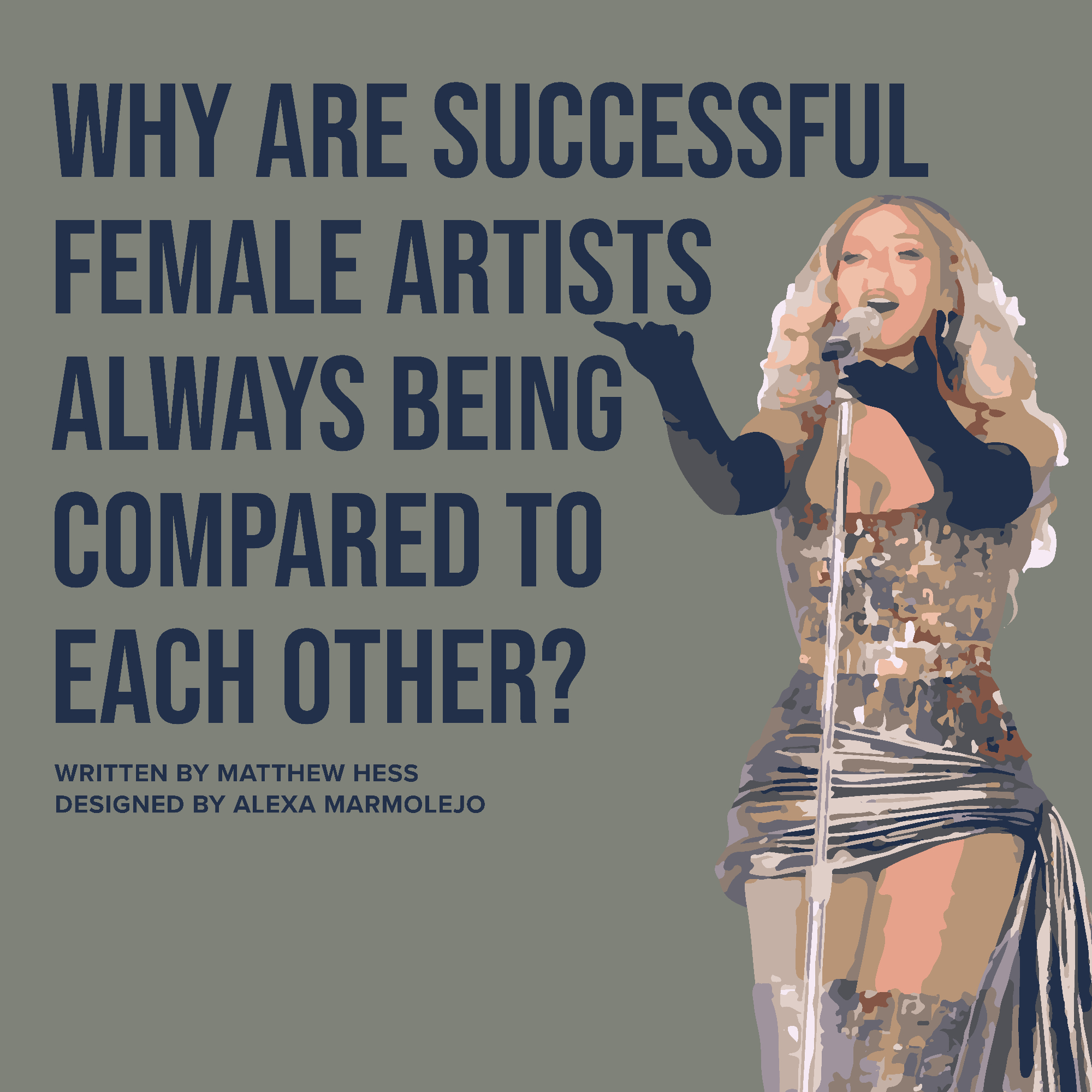
The music industry, following the trend of many other industries, is a breeding ground for gender-based discrimination and misogyny. A prominent manifestation of this issue is the constant and unfair comparisons between female artists.
Many argue that women in the music industry are faced with higher expectations than men. With each new album, they are pressured to make a big change about themselves. This change can be physical, such as when Taylor Swift would change her hairstyle with each new album in the 2010s. It can also be emotional, like when Miley Cyrus escaped from her Disney image with the controversial release of “Wrecking Ball.”
Beyoncé and Swift, for example, have dominated pop culture for the past six months. The economic impact of their United States tours will have a noticeable impact on the year-end total GDP. One would think that this would create mutual adoration for the superstars; however, that is not the case.
Despite reaching new heights in their careers, Swift and Beyoncé are not exempt from constant scrutiny. Critics, fans and the media frequently engage in such comparisons, sometimes favoring one artist while belittling the other. Although the artists differ in music genre, personality and performance style, the public does not allow them to mutually succeed. Random statistics, online views and “media relevance” are always cited as allegedly valid reasons why one is better than the other.
Longstanding influential men in the music industry never face this level of security. Drake and Travis Scott, for example, remain culturally relevant and continue to release successful albums. They maintain loyal and passionate fans. However, they receive nowhere near the unfair comparisons that women do.
TikTok could play a large role in facilitating this behavior. It has become a hub for fan feuds. Fans of Swift and Beyoncé, for instance, engage in arguments over who is more influential or talented. These disputes can perpetuate toxic behavior, creating an environment where fans feel the need to constantly defend their chosen artist.
Social media as a whole has provided a space for this discourse to flourish. There are certain social norms that humans understand when conversing face-to-face. These norms can be unapparent on a social media platform, where identity is easy to hide. Thus, if an adult user sees a tweet hating Beyoncé, they will be more likely to react to it on the assumption that the creator is a mature, rational person. The adult has no way of knowing who wrote the post and has already given it more attention and validity than it would ever be given in normal social settings.
The need for validation could be another reason these fans tear female artists apart. Fandoms are very emotionally tied to artists for various reasons. They look up to them as role models. Thus, any attack on their role model can be construed as an attack on them in an effort to defend their tastes and convictions.
Constantly comparing women in the music industry is counterproductive. It diminishes the unique creativity that each artist brings to her work. Such comparisons often focus on superficial attributes rather than their musical talents. This not only perpetuates sexist stereotypes but also detracts from their accomplishments.
There is an illogical pattern with these comparisons. They emphasize the idea that success seems contingent on outshining each other, instead of recognizing sufficient room for both audiences. There is plenty of space in the music industry for women to succeed without replacing one another’s relevance. It is essential that these forms of critical comparisons, both within and outside fandoms, cease to continue.